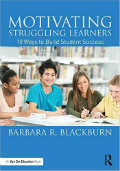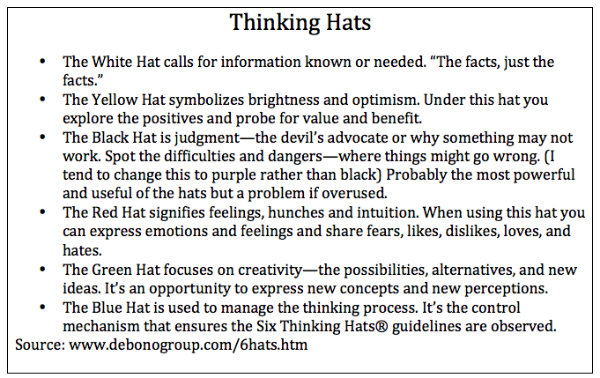Rigor Made Easy: 3 Ways to Go Deeper

Frequent contributor Barbara Blackburn shares three activities to get below the surface of learning and encourage deeper thinking from middle graders.
By Barbara R. Blackburn
Raising the level of rigor in your classroom does not have to be difficult or a separate lesson. Rather, using creative and engaging instructional strategies that push students to higher levels of thinking can occur as a regular part of your instruction.
Increasing Rigor Through Riddles
First, let’s look at a way to increase the rigor of vocabulary. Usually, we ask students to demonstrate their understanding of a word or concept by restating the definition in their own words or by using it in a sentence. Oftentimes, students simply memorize the definition long enough to complete the activity and take a test, rather than truly understanding the word or concept.
To increase the rigor, ask students to write a riddle about the word or concept. In addition to knowing what something means, they must turn that information into clues so that other students can guess the answer.
Prices go up.
Your wallet is thinner.
You pay twice as much
To provide family dinner.
Answer: Inflation
Increasing Rigor Through Problem-Solving
When we start a lesson, we typically tell students what we will learn about that day. We are assuming they do not know anything yet, so we do all the talking. That’s not very rigorous. We can turn that around and make all our introductions more about problem-solving and discovery in a simple way.
Three Alike is a game in which the teacher provides three examples to the students, and then asks the group to guess what he or she will be teaching about today. Rather than saying, “I’m going to be teaching about negative integers today,” the teacher says, “Notice I have three numbers on the screen (-5, -14, -25). What do they have in common?” At least one student in the room probably knows the answer. Then you can build off that information as the lesson continues.

Once students are familiar with both games, you can shift the ownership to them. They come up with the examples, and their classmates must guess the answers.
Increasing Rigor Through Various Points of View
It’s important to look at a situation through a variety of perspectives. When I was a classroom teacher, I used six-sided cubes to encourage thinking about an issue. Each side of the cube had a prompt, such as “apply it,” “analyze it,” etc. It was effective, but not for every assignment. It also didn’t encourage group problem-solving.
Another option is the use of Thinking Hats. With this activity, students are placed in groups of six, and each one is assigned a role, or hat. Notice from the descriptions below the perspective or assignment for each student.
Imagine using this when analyzing an issue in a social studies class, such as whether supporters of ISIS should be able to use social media to promote their agenda. The white hat student points out the facts of the issue, such as the first amendment. The yellow hat looks for the positive aspects in the issues, or the benefits.
Black, or purple, plays the devil’s advocate. What are the difficulties? Where might something go wrong with this issue? How might the use of social media promote their agenda and damage the United States? The red hat focuses on emotions, both positive and negative. What emotions drive the argument over this issue? Green looks at the creative nature of the issue, with possibilities, solutions, and new ideas. Finally, the blue hat is the manager of the process, ensuring that all perspectives are addressed.
Imagine how much more depth of discussion and analysis takes place when looking at the issue from all perspectives. You have raised the rigor of the assignment and engaged students at a higher level.






































Riddles have always helped many people retain information.
I like three alike activities because every student no matter what level they are they can participate without feeling threatened and have the freedom to express their ideas. Each student is learning from other students answers.